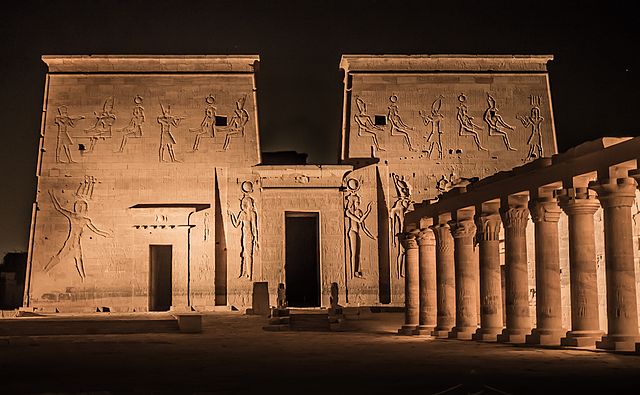Ancient Egyptian architecture
Spanning over three thousand years, ancient Egypt was not one stable civilization but in constant change and upheaval, commonly split into periods by historians. Likewise, ancient Egyptian architecture is not one style, but a set of styles differing over time but with some commonalities.
Image: Kheops Pyramid
Image: Hypostyle column in the Temple of Amun panoramio
Image: Philae temple at night
The well preserved first pylon at the Temple of Isis in Philae, serving as a monumental gateway to the temple complex
Ancient Egypt was a civilization of ancient Northeast Africa. It was concentrated along the lower reaches of the Nile River, situated in the place that is now the country Egypt. Ancient Egyptian civilization followed prehistoric Egypt and coalesced around 3100 BC with the political unification of Upper and Lower Egypt under Menes. The history of ancient Egypt unfolded as a series of stable kingdoms interspersed by periods of relative instability known as “Intermediate Periods.” The various kingdoms fall into one of three categories: the Old Kingdom of the Early Bronze Age, the Middle Kingdom of the Middle Bronze Age, or the New Kingdom of the Late Bronze Age.
A typical Naqada II jar decorated with gazelles (Predynastic Period)
Early tomb painting from Nekhen, c. 3500 BC, Naqada, possibly Gerzeh, culture
The Narmer Palette depicts the unification of the Two Lands.
The pyramids of Giza are among the most recognizable symbols of ancient Egyptian civilization.








